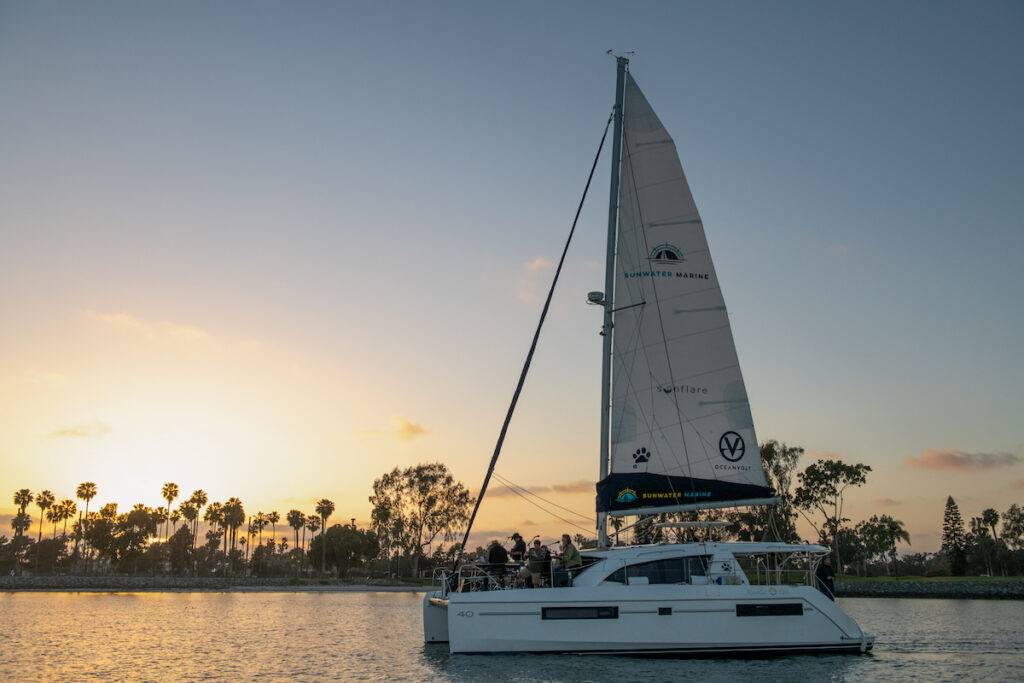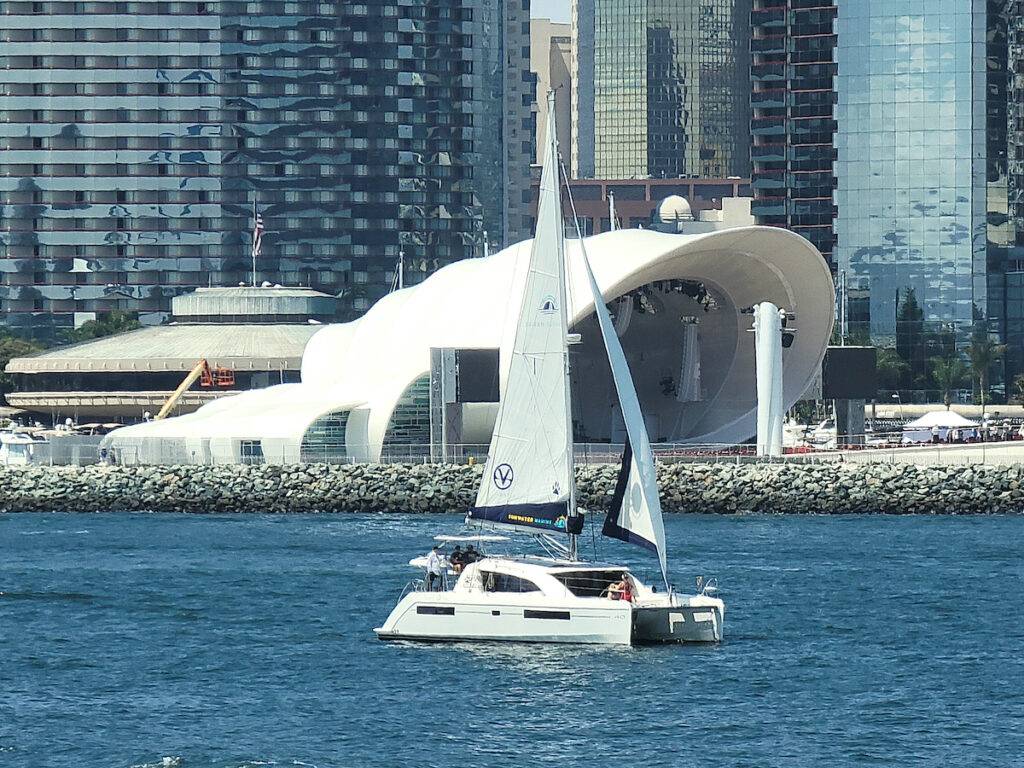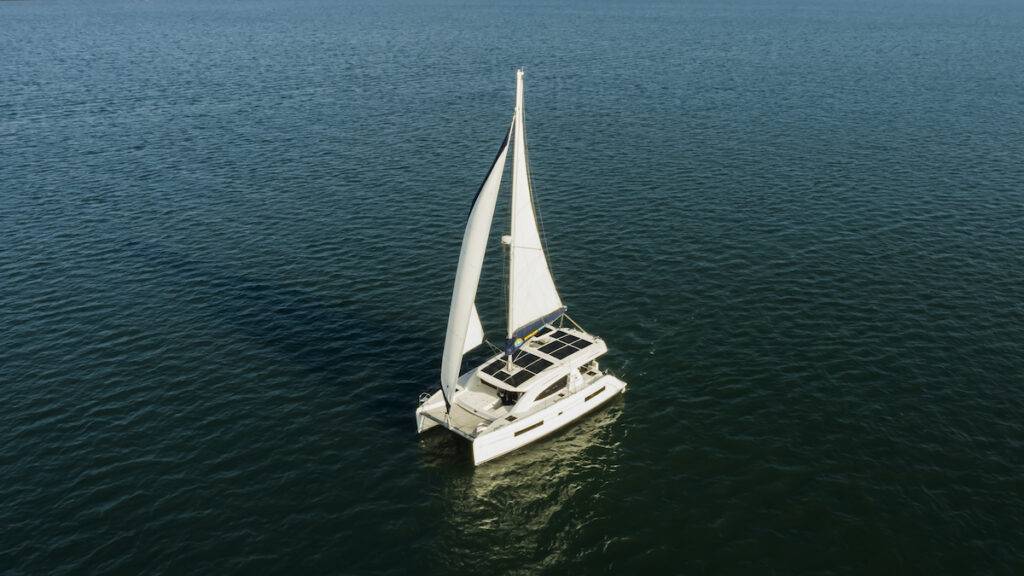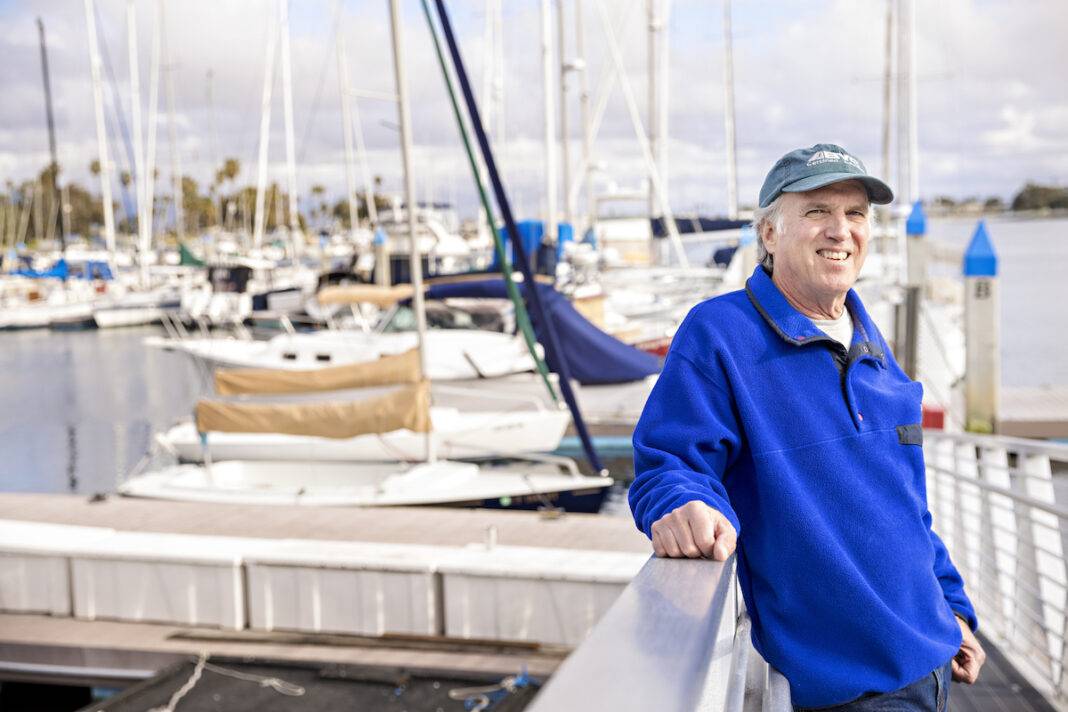James Richmond converted his catamaran to solar power.
On a cool winter morning, I meet James Richmond at a marina on Harbor Island, and soon we’re motoring away from the dock on the Ramblin’ Rose, his 40-foot sailing catamaran. The wind is just starting to pick up and the sailors will be out in bunches soon, but we have the water mostly to ourselves.
As on this day, James has always been a bit ahead of the curve. When he graduated from the University of Michigan, he started selling solar energy systems. In 1984. Ahead of his time, he forged a successful career as a developer for energy efficiency and renewable energy projects.
The Ramblin’ Rose is well ahead of her time, too. She sports a pair of Oceanvolt Servoprop electric motors, and to charge those batteries, a Sunflare solar array of ultra light, thin, and flexible panels. James proudly shows off this high tech: The panels dotting the cabin roof are obvious, but most of the innovations are hidden until James preps to cast off.
There are no rumbling diesels warming up, and as soon as he hits the throttles, the boat spins almost in place and hums away with incredible nimbleness and silence.
There are no rumbling diesels warming up, and as soon as he hits the throttles, the boat spins almost in place and hums away with incredible nimbleness and silence. The Oceanvolt engines are a marvel, featuring computer-controlled, self-articulating propeller blades that adjust their angle automatically for maximum efficiency. When under sail, the blades “feather” for minimal resistance, and if going over 5 knots, they can adjust to become water-powered turbines that generate power and recharge the batteries.
These marvels weren’t cheap, at about $100,000 for the solar array, motors, and lithium batteries. But James combines his love of sailing and his passion for efficiency and renewable energy. As with any renewable project, the first goal is to minimize energy use, be it a school, warehouse, or sailboat.



“Solar is expensive when you’re powering waste,” he says. “The goal is less about selling solar than reducing the carbon footprint.” Sailors have always had to be careful about energy use, so James built the Ramblin’ Rose as “a demo, kind of a model home,” for the technologies, thinking maybe he could sell them to fellow environmentally conscious mariners.
So far, that hasn’t panned out. “The consciousness isn’t quite there,” he says. Regulations on marine emissions have been proposed but are fought very hard by entrenched boating groups, and incentives don’t help much defraying the pricey tech. He notes that there are a lot of sailing DIY hobbyists who use solar panels and electric motors, but they tend to use less sophisticated systems bought cheaply online.
James combines his love of sailing and his passion for efficiency and renewable energy. As with any renewable project, the first goal is to minimize energy use, be it a school, warehouse, or sailboat.
Undaunted, he knows the switch to electric boating is coming, if maybe not soon. Until then the Ramblin’ Rose is an amazing example of what electric watercraft can do. As we purr through San Diego Bay, James pauses and fires up the diesel engines he’s kept on the boat for redundancy (and with an alternator, he can use the starboard engine to charge the batteries). The noise isn’t deafening, but it’s definitely not pleasant. When he switches back to electric power, the boat is moving just as fast but more noise is coming from the water against the hulls than from the motors. Our conversation, almost at a shout over the diesels, now hovers just north of a whisper.
When we glide back to the dock, James uses the motors to cozy Ramblin’ Rose up to the dock with easy precision. I was wishing for more time on board, and dreaming of a sustainable and near-silent boating future.


